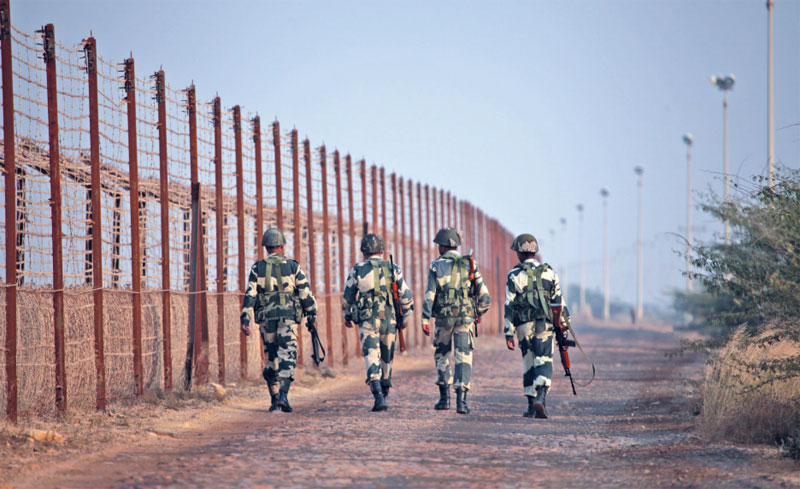Sense and Sensitivity
 S.K. Sood
S.K. Sood
There was a report recently that one Union minister wrote a letter to the company commander of 85 battalion of the BSF at Hakimpur post granting permission to a resident of the Hakimpur village to carry three kgs of beef for personal consumption to his home located outside the fence close to the border with Bangladesh. This system of granting permission has been in vogue for a long time in order to ensure that large quantities are not taken across the fence for smuggling into Bangladesh. This is the degree to which the lives of the people living on the border are circumscribed by national security concerns.
Even though the primary role of the BSF, responsible for guarding India-Bangladesh and India-Pakistan borders, is promotion of ‘a sense of security among the people living in the border areas,’ the security concerns and statistical approach for measuring the effectiveness of the force has given primacy to the other two tasks, which are prevention of ‘trans-border crimes, unauthorised entry into or exit from the territory of India’ and prevention of ‘smuggling and other illegal activity’. It is true that compliance of the second and third tasks do promote security, but the process involved puts several restrictions on the movement and lifestyle of the border population.
India had to resort to militaristic system of border guarding because of the manner in which the country was partitioned. The requirement of placing strict border controls was realised after the 1965 incursion in the Kutch region by Pakistan. The BSF was raised and deployed along the border with Pakistan to ensure that the illegal movement of goods and people didn’t take place. Of course, it also meant that there was a well-trained force deployed close to the border to face the initial brunt of the enemy, in case of a war, until the arrival of the military.
The BSF operates with Border Outposts (BOP) as bases for patrolling. Several restrictions were therefore imposed on the movement of civilians in the vicinity of the border in order to prevent injury or loss of life to the locals while taking action against smugglers and other trans-border criminals. Restrictions on movement near the border, especially at night prevented locals from working till late, thus adversely affecting their income. Being subjected to body searches to prevent banned items being smuggled also caused a lot of inconvenience.
These controls became stricter after the fence was constructed in the late 1980s along the border with Pakistan in Punjab because of former’s support to militancy in Punjab and Jammu and Kashmir. The success of the fence in Punjab led to fencing of the entire border with Pakistan and later along Bangladesh.

However, the fence created many problems for the civilian population. It led to the isolation of 150-yard-wide strip of mostly cultivable farmland as the fence was built inside the Indian border, often cutting across the farms. This meant that either the farmer had to abjure his land completely or rely upon the troops to access it. Realising the necessity of the farmers to access their fields, the fence included gates at appropriate distances, adjusted according to the needs of the locals. The residents whose farms fell outside the fence now found it even more difficult to go to their fields, as they had to enter and exit at fixed time and places. To provide security to the farmers working in their fields across the fence, the BSF started deputing patrols which remained in the area till the time farmers did not return.
Everyone going across the fence, including the BSF
Subscribe To Force
Fuel Fearless Journalism with Your Yearly Subscription
SUBSCRIBE NOW
We don’t tell you how to do your job…
But we put the environment in which you do your job in perspective, so that when you step out you do so with the complete picture.








